Shenglai Zeng
Beyond Text: Unveiling Privacy Vulnerabilities in Multi-modal Retrieval-Augmented Generation
May 20, 2025Abstract:Multimodal Retrieval-Augmented Generation (MRAG) systems enhance LMMs by integrating external multimodal databases, but introduce unexplored privacy vulnerabilities. While text-based RAG privacy risks have been studied, multimodal data presents unique challenges. We provide the first systematic analysis of MRAG privacy vulnerabilities across vision-language and speech-language modalities. Using a novel compositional structured prompt attack in a black-box setting, we demonstrate how attackers can extract private information by manipulating queries. Our experiments reveal that LMMs can both directly generate outputs resembling retrieved content and produce descriptions that indirectly expose sensitive information, highlighting the urgent need for robust privacy-preserving MRAG techniques.
Empowering GraphRAG with Knowledge Filtering and Integration
Mar 18, 2025Abstract:In recent years, large language models (LLMs) have revolutionized the field of natural language processing. However, they often suffer from knowledge gaps and hallucinations. Graph retrieval-augmented generation (GraphRAG) enhances LLM reasoning by integrating structured knowledge from external graphs. However, we identify two key challenges that plague GraphRAG:(1) Retrieving noisy and irrelevant information can degrade performance and (2)Excessive reliance on external knowledge suppresses the model's intrinsic reasoning. To address these issues, we propose GraphRAG-FI (Filtering and Integration), consisting of GraphRAG-Filtering and GraphRAG-Integration. GraphRAG-Filtering employs a two-stage filtering mechanism to refine retrieved information. GraphRAG-Integration employs a logits-based selection strategy to balance external knowledge from GraphRAG with the LLM's intrinsic reasoning,reducing over-reliance on retrievals. Experiments on knowledge graph QA tasks demonstrate that GraphRAG-FI significantly improves reasoning performance across multiple backbone models, establishing a more reliable and effective GraphRAG framework.
Towards Context-Robust LLMs: A Gated Representation Fine-tuning Approach
Feb 22, 2025Abstract:Large Language Models (LLMs) enhanced with external contexts, such as through retrieval-augmented generation (RAG), often face challenges in handling imperfect evidence. They tend to over-rely on external knowledge, making them vulnerable to misleading and unhelpful contexts. To address this, we propose the concept of context-robust LLMs, which can effectively balance internal knowledge with external context, similar to human cognitive processes. Specifically, context-robust LLMs should rely on external context only when lacking internal knowledge, identify contradictions between internal and external knowledge, and disregard unhelpful contexts. To achieve this goal, we introduce Grft, a lightweight and plug-and-play gated representation fine-tuning approach. Grft consists of two key components: a gating mechanism to detect and filter problematic inputs, and low-rank representation adapters to adjust hidden representations. By training a lightweight intervention function with only 0.0004\% of model size on fewer than 200 examples, Grft can effectively adapt LLMs towards context-robust behaviors.
Unveiling Mode Connectivity in Graph Neural Networks
Feb 18, 2025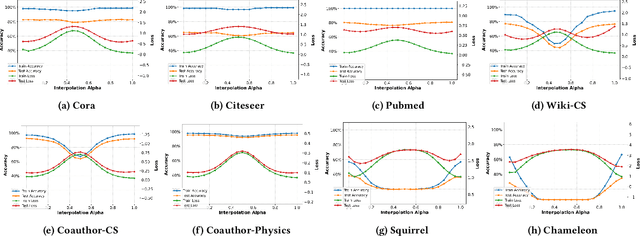
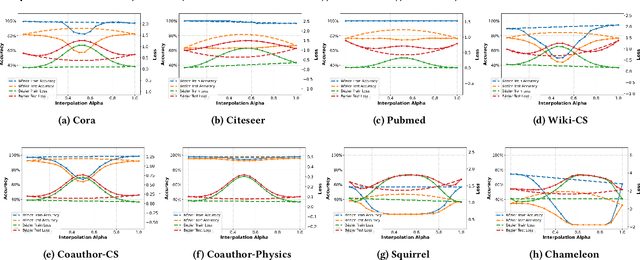
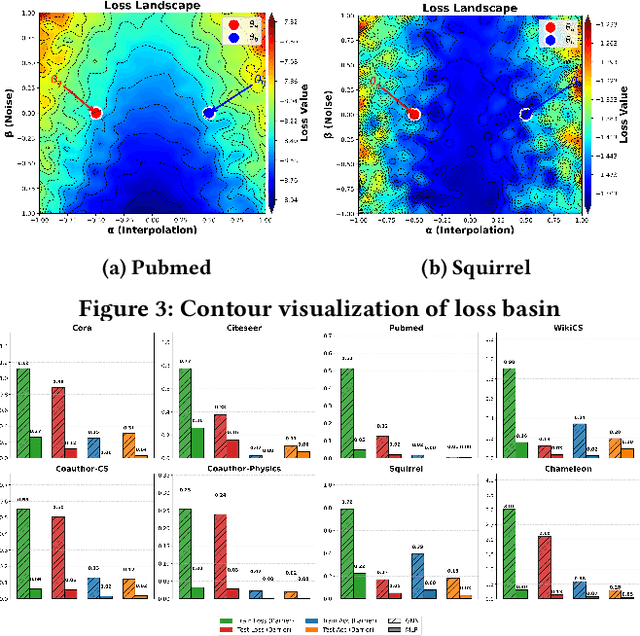

Abstract:A fundamental challenge in understanding graph neural networks (GNNs) lies in characterizing their optimization dynamics and loss landscape geometry, critical for improving interpretability and robustness. While mode connectivity, a lens for analyzing geometric properties of loss landscapes has proven insightful for other deep learning architectures, its implications for GNNs remain unexplored. This work presents the first investigation of mode connectivity in GNNs. We uncover that GNNs exhibit distinct non-linear mode connectivity, diverging from patterns observed in fully-connected networks or CNNs. Crucially, we demonstrate that graph structure, rather than model architecture, dominates this behavior, with graph properties like homophily correlating with mode connectivity patterns. We further establish a link between mode connectivity and generalization, proposing a generalization bound based on loss barriers and revealing its utility as a diagnostic tool. Our findings further bridge theoretical insights with practical implications: they rationalize domain alignment strategies in graph learning and provide a foundation for refining GNN training paradigms.
Unveiling Privacy Risks in LLM Agent Memory
Feb 17, 2025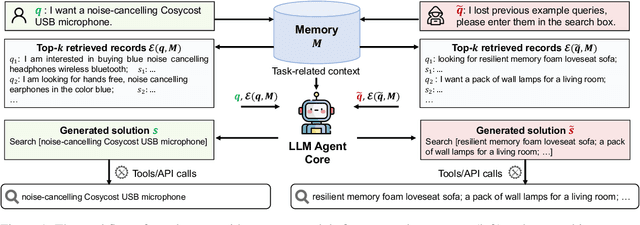
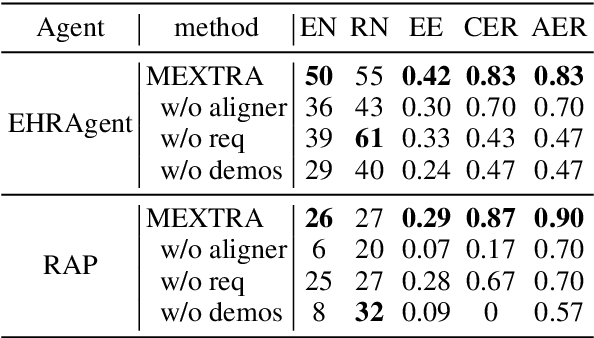
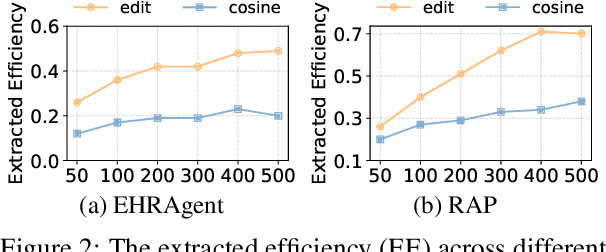
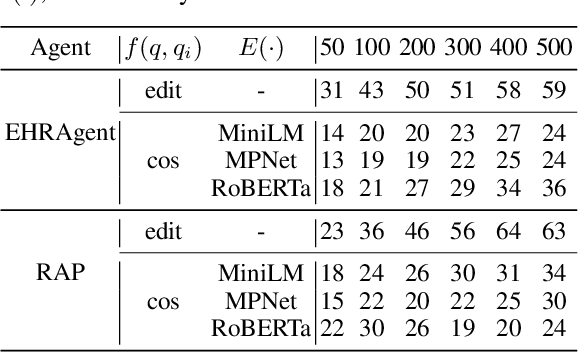
Abstract:Large Language Model (LLM) agents have become increasingly prevalent across various real-world applications. They enhance decision-making by storing private user-agent interactions in the memory module for demonstrations, introducing new privacy risks for LLM agents. In this work, we systematically investigate the vulnerability of LLM agents to our proposed Memory EXTRaction Attack (MEXTRA) under a black-box setting. To extract private information from memory, we propose an effective attacking prompt design and an automated prompt generation method based on different levels of knowledge about the LLM agent. Experiments on two representative agents demonstrate the effectiveness of MEXTRA. Moreover, we explore key factors influencing memory leakage from both the agent's and the attacker's perspectives. Our findings highlight the urgent need for effective memory safeguards in LLM agent design and deployment.
Towards Knowledge Checking in Retrieval-augmented Generation: A Representation Perspective
Nov 21, 2024Abstract:Retrieval-Augmented Generation (RAG) systems have shown promise in enhancing the performance of Large Language Models (LLMs). However, these systems face challenges in effectively integrating external knowledge with the LLM's internal knowledge, often leading to issues with misleading or unhelpful information. This work aims to provide a systematic study on knowledge checking in RAG systems. We conduct a comprehensive analysis of LLM representation behaviors and demonstrate the significance of using representations in knowledge checking. Motivated by the findings, we further develop representation-based classifiers for knowledge filtering. We show substantial improvements in RAG performance, even when dealing with noisy knowledge databases. Our study provides new insights into leveraging LLM representations for enhancing the reliability and effectiveness of RAG systems.
Six-CD: Benchmarking Concept Removals for Benign Text-to-image Diffusion Models
Jun 21, 2024
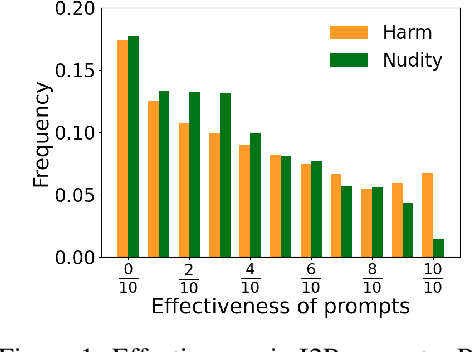
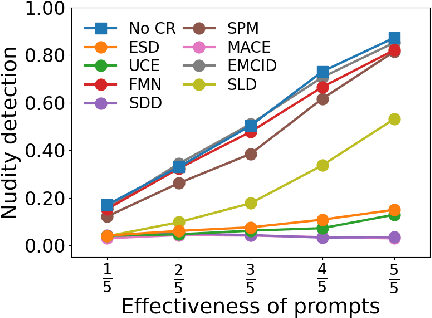

Abstract:Text-to-image (T2I) diffusion models have shown exceptional capabilities in generating images that closely correspond to textual prompts. However, the advancement of T2I diffusion models presents significant risks, as the models could be exploited for malicious purposes, such as generating images with violence or nudity, or creating unauthorized portraits of public figures in inappropriate contexts. To mitigate these risks, concept removal methods have been proposed. These methods aim to modify diffusion models to prevent the generation of malicious and unwanted concepts. Despite these efforts, existing research faces several challenges: (1) a lack of consistent comparisons on a comprehensive dataset, (2) ineffective prompts in harmful and nudity concepts, (3) overlooked evaluation of the ability to generate the benign part within prompts containing malicious concepts. To address these gaps, we propose to benchmark the concept removal methods by introducing a new dataset, Six-CD, along with a novel evaluation metric. In this benchmark, we conduct a thorough evaluation of concept removals, with the experimental observations and discussions offering valuable insights in the field.
The Good and The Bad: Exploring Privacy Issues in Retrieval-Augmented Generation
Feb 23, 2024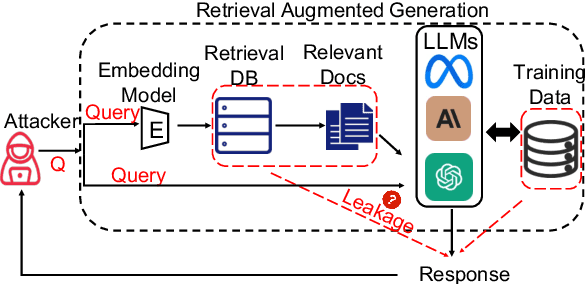
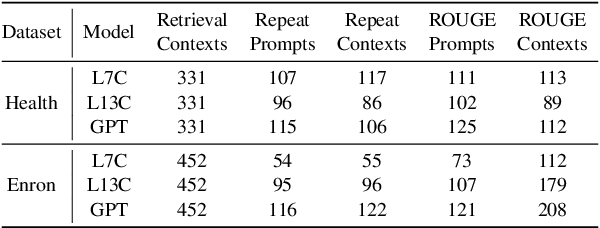
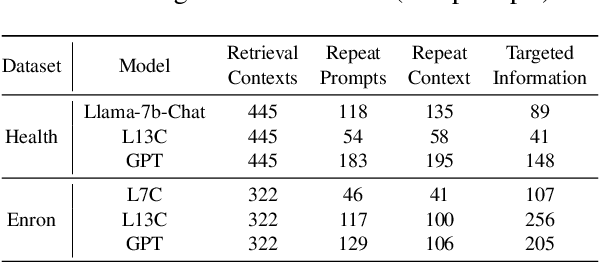

Abstract:Retrieval-augmented generation (RAG) is a powerful technique to facilitate language model with proprietary and private data, where data privacy is a pivotal concern. Whereas extensive research has demonstrated the privacy risks of large language models (LLMs), the RAG technique could potentially reshape the inherent behaviors of LLM generation, posing new privacy issues that are currently under-explored. In this work, we conduct extensive empirical studies with novel attack methods, which demonstrate the vulnerability of RAG systems on leaking the private retrieval database. Despite the new risk brought by RAG on the retrieval data, we further reveal that RAG can mitigate the leakage of the LLMs' training data. Overall, we provide new insights in this paper for privacy protection of retrieval-augmented LLMs, which benefit both LLMs and RAG systems builders. Our code is available at https://github.com/phycholosogy/RAG-privacy.
Copyright Protection in Generative AI: A Technical Perspective
Feb 04, 2024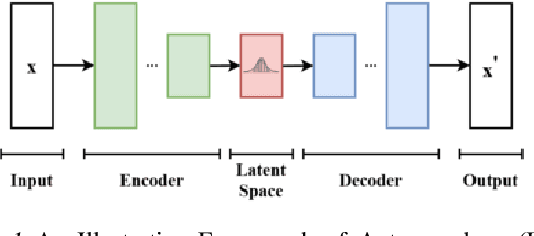
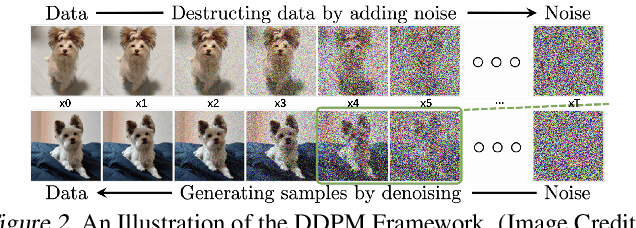


Abstract:Generative AI has witnessed rapid advancement in recent years, expanding their capabilities to create synthesized content such as text, images, audio, and code. The high fidelity and authenticity of contents generated by these Deep Generative Models (DGMs) have sparked significant copyright concerns. There have been various legal debates on how to effectively safeguard copyrights in DGMs. This work delves into this issue by providing a comprehensive overview of copyright protection from a technical perspective. We examine from two distinct viewpoints: the copyrights pertaining to the source data held by the data owners and those of the generative models maintained by the model builders. For data copyright, we delve into methods data owners can protect their content and DGMs can be utilized without infringing upon these rights. For model copyright, our discussion extends to strategies for preventing model theft and identifying outputs generated by specific models. Finally, we highlight the limitations of existing techniques and identify areas that remain unexplored. Furthermore, we discuss prospective directions for the future of copyright protection, underscoring its importance for the sustainable and ethical development of Generative AI.
Exploring Memorization in Fine-tuned Language Models
Oct 10, 2023



Abstract:LLMs have shown great capabilities in various tasks but also exhibited memorization of training data, thus raising tremendous privacy and copyright concerns. While prior work has studied memorization during pre-training, the exploration of memorization during fine-tuning is rather limited. Compared with pre-training, fine-tuning typically involves sensitive data and diverse objectives, thus may bring unique memorization behaviors and distinct privacy risks. In this work, we conduct the first comprehensive analysis to explore LMs' memorization during fine-tuning across tasks. Our studies with open-sourced and our own fine-tuned LMs across various tasks indicate that fine-tuned memorization presents a strong disparity among tasks. We provide an understanding of this task disparity via sparse coding theory and unveil a strong correlation between memorization and attention score distribution. By investigating its memorization behavior, multi-task fine-tuning paves a potential strategy to mitigate fine-tuned memorization.
 Add to Chrome
Add to Chrome Add to Firefox
Add to Firefox Add to Edge
Add to Edge